by Lee Ordeman
Pacific Shintaido 2022 Kangeiko: “Cultivating Compassion”
Held January 15-16 via Zoom
Director of Instruction: Shin Aoki
Instructors: Shin Aoki and Ula Chambers
Gasshuku Managers: Derk Richardson and Cheryl Williams
Zoom Manager: Sarah Baker
Communications: Brad Larson and Tereza Soldátová
PacShin set an ambitious and timely goal for its 2022 Kangeiko: “Cultivating Compassion”. As explained in opening remarks by event manager Derk Richardson, as we enter the third year of the global pandemic, societies are facing a crisis of “compassion fatigue”. Derk described compassion as “the willingness to bear witness and to be with — the quivering of the heart in response to — pain and suffering.”
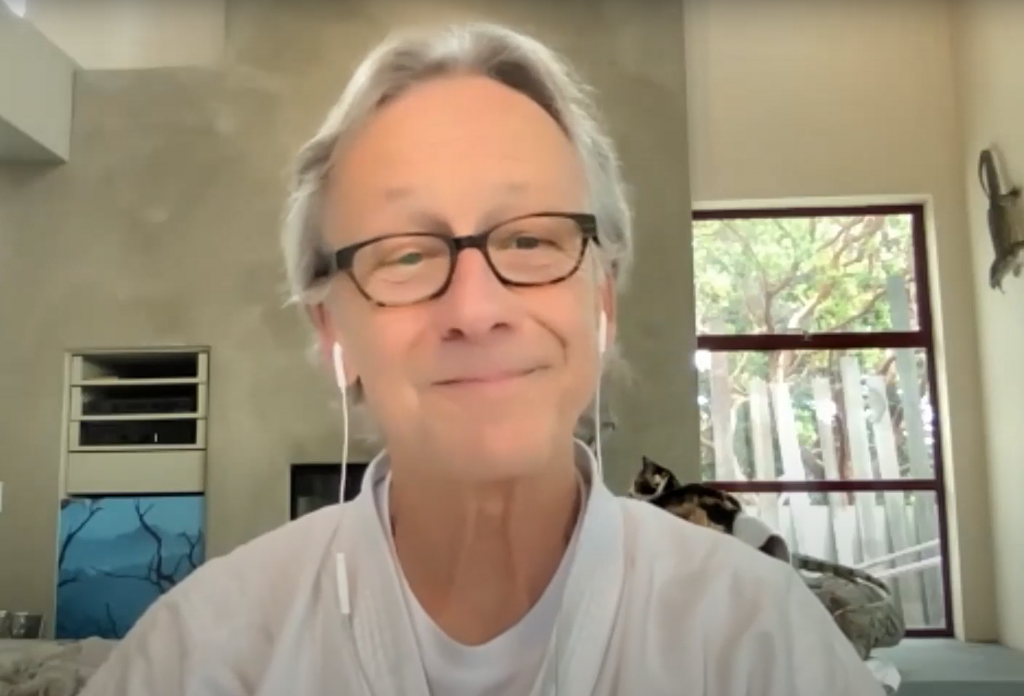
Quoting Buddhist teacher Stephen Batchelor, Derk explained that compassion arises out of emptiness: “If we experience emptiness as being empty of any separate self, then we will naturally be compassionate and never put ourselves above others, because the true self is inclusive of all others.”
Derk observed, “So maybe cultivating compassion has to do with realizing emptiness — letting go of self-centered reactivity, bearing witness to the suffering of others, with loving kindness and a sense of equanimity.” He continued, “In Mahayana Buddhism the sword of compassion is used to cut through the illusion of separation of self and other, of this and that. And Shintaido, to me, is a wonderful vehicle for reaching that state of being empty of any separate self and therefore a way, through the body, to cultivate compassion.”
In further opening remarks, Shin Aoki, director of instruction and co-instructor, observed, “In difficult times such as this, it is particularly important that we keep respect and understanding for each other and practice simple acts of kindness. To me Shintaido is a rich source of learning-tools that help us cultivate compassion. We develop sensitivity to others and remind ourselves to keep our hearts open and communicate with sincere irimi, or stepping, into our partner’s heart. We hope that you’ll have a more open and bigger heart by the end of the workshop and keep building a better world, around you and inside you.”
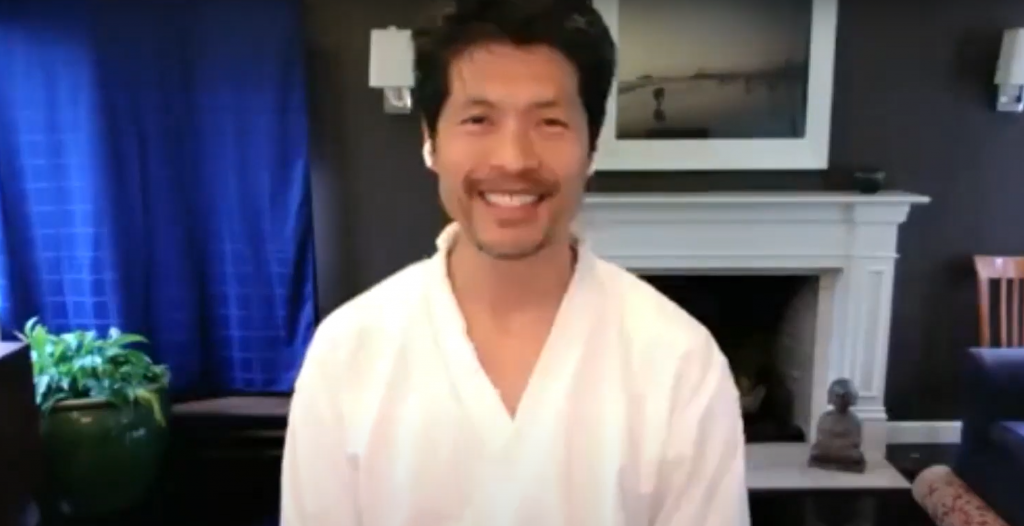
Ula then set forth the objective: “In the coming keikos, Shin and I are going to take you on a journey, and the journey involves looking at where compassion can be found and how we can increase it, how we can cultivate and grow it, how to plant the seeds and make them grow up.”
With this agenda set, the three keiko that followed offered fresh approaches to adapting our Shintaido curriculum in innovative ways within the limitations of the Zoom medium. The approach seemed to achieve the desired affect: eliminating barriers between self and others.
Recordings of the keiko are available on the Shintaido of America Youtube channel, so there is no point in detailing every single thing that was taught. Instead, the following report will offer highlights and “takeaways” found in the teaching. If you find something in this description that piques your interest, you can go to the recorded source and go deeper.
Watch the Kangeiko videos on YouTube of Shintaido of America
Keiko 1
After Shin eased participants into practice with jumbi taiso, Ula shared a way to use Ten Position Meditation as a source for partner practice for giving and and receiving energy or the partner’s feeling. She matched bokyo-ii (“returning home” or “looking homeward”) with joshin-i (“purifying the heart/mind”) in a back-and-forth fashion with partner that allowed for giving and receiving. These movements flowed naturally enough into renki kumite, back and forth with a partner — first Ula and then a randomly selected partner in a breakout room. Partners applied palm to fist, as if they were really touching and feeling the cycle of energy given and received.
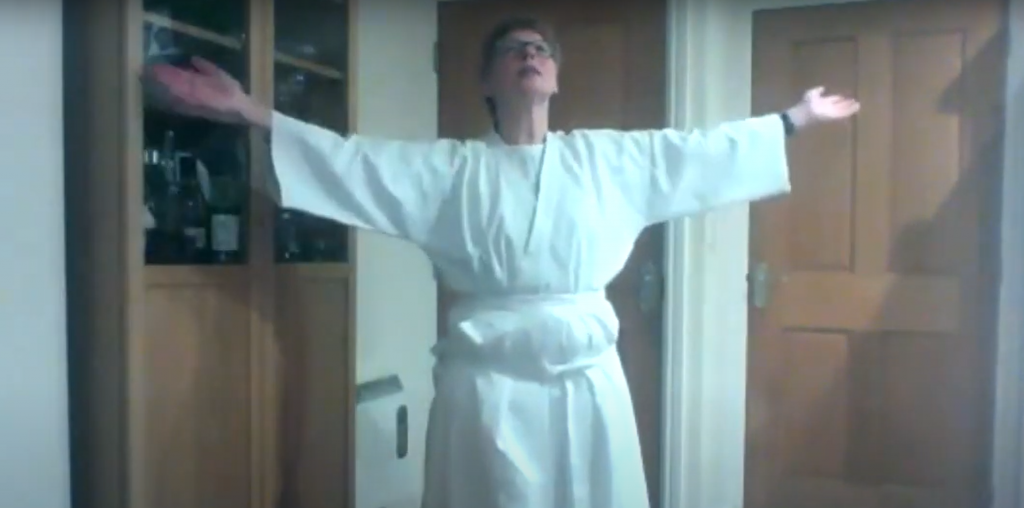
Shin carried the renki practice further, creatively with short sword and movements from the Jissen kumitachi curriculum, namely seichuken and jigoken. Ultimately we were piercing forward with seichuken, like tsuki, and receiving with jigoken, taking care to bring the receiving sword through the heart chakra area. Again the give and take of energy was felt as screen-to-screen partners stepped forward and backward, alternating between these two forms, first with Shin and then in breakout.
After the breakout period during which partners could choose to do Renki Kumite with “swords” or by fist and palms, Ula and Shin ended the keiko with wakame taiso, at one point suggesting that instead of imagining a partner pushing us we instead imagine the ground gently swaying beneath our feet, like a very gentle earthquake. This seemed an imaginative variation that would adapt well for solo practice, not just practice by Zoom. Finally, Ula led wakame taiso with her voice while “pushing” with her hand as the participants had their backs to their screens and imagined receiving from behind. Group wakame without an individual leader followed, as individuals moving together across continents and ocean.
Keiko 2
After another relaxing and warming jumbi taiso with Shin, Ula taught Tenshingoso as a way of feeling and exploring life’s journey, saying that we can find in our lives a place for kaihotai Tenshingoso or the yokitai style found in the Taimyo kata. She said that through the study of Taimyo kata we know that sometimes life’s journey requires us to change our mode to being more relaxed, gentle. The yokitai style of Tenshingoso allows us to find that mode anytime we might be tired or may be dealing with someone who needs a gentle approach. We then did Tenshingoso dai, and then a a softer, subtler, receptive Tenshingoso as in the Taimyo kata. Then she led us in a mirroring kumite and afterwards sent us into breakout rooms to explore the dynamics of mirroring Tenshingoso in pairs.
Next Ula started us down a path of variations on Aozora (Blue Sky) Taiso, which normally involves alternating “AH” and “OH” movements and voice. The variation involved fudodachi stepping backward and forward with the same leg, starting, AH (backward), EH (forward), then eventually also EE (backward), then OH (forward). The EH was a deep diagonal cut in front of the body. This pattern could be repeated with a deepening and engrossing rhythm that took over for itself as we explored our spaces at home. Shin then showed how this could be done using a stick or sword. He partnered with the viewer in something like a renki exchange using the weapon.
Ula finished the keiko by grounding us with a lovely series of movements based on traveling down into UN, heightening and deepening with each repetition, as we raised the starting place of UN from the lower chakra up the torso, to the forehead and finally above to Ten and returning to UN position.
Keiko 3
Shin’s warm ups featured self-care with massage and used AH and EH. His warmups for all three keiko offered a wealth of ideas for how to keep the classic jumbi taiso fresh, fun, and affective.
As the main keiko began, Ula continued the previous keiko’s stepping, backward from musubidachi into AH and forward with EH. A natural progression took the form of a one-step Eiko into fudodachi, backward with AH and forward with EH and then back again, repeating continuously, exploring the space in this fashion. This could be done with open, free hand or with short sword. Shin then demonstrated how the cut could be done farther and deeper into fudodachi or even hanmihandachi.
In preparation for the breakout-room kumite to follow, Shin offered a preparatory exercise for “cleansing the body” by hanging forward and stretching with both hands, palms down on the sword, then slowly stretching outward and up to Ten, then lowering the sword straight down through the heart chakra and downward toward the feet and all the way down to the starting point, hanging down in front. This was repeated as a cycle, and as the sword would pass through the chakras in its downward journey “making more space inside you so that it’s easier for you to be a recipient of compassion.” We were encouraged to continue to explore the space and move about our various rooms, stepping forward and back with fudodachi. A variation without sword was introduced, resembling receiving in kiriorshi kumite, imagining we had hold of the wrists of a partner who cut down and through the heart chakra and below — something we’ve missed over the past two years of isolated keiko.
Ula took over as our partner, doing kirioroshi kumite in preparation for breakout room kumite. She encouraged us to cut or receive into the heart, the solar plexus, and the ground root — the koshi: “Keep your voice going for your partner and reach inside their world if you are cutting. And accept your partner’s blessing if you are being cut.”
After the time for breakout-room kumite, Ula then led us in 5 minutes of shoko to deepen our process of opening while both sending and receiving: “… relaxing your shoulders but pushing out through your heart, solar plexus, koshi — all those channels that have been opened and filled with compassion [and] are now streaming out to the world ahead and to the future.”
After Shoko, Shin brought us back together, instructing us to open our arms in an imagined, all-encompassing circle. As our screens turned to “gallery view so that all could be seen in their own spaces, Shin urged us to “reach out arms to friends in a big circle across the ocean, extending your compassion to others and ourselves. Arms were then lowered and after a moment of quiet, “mokuso” was called.
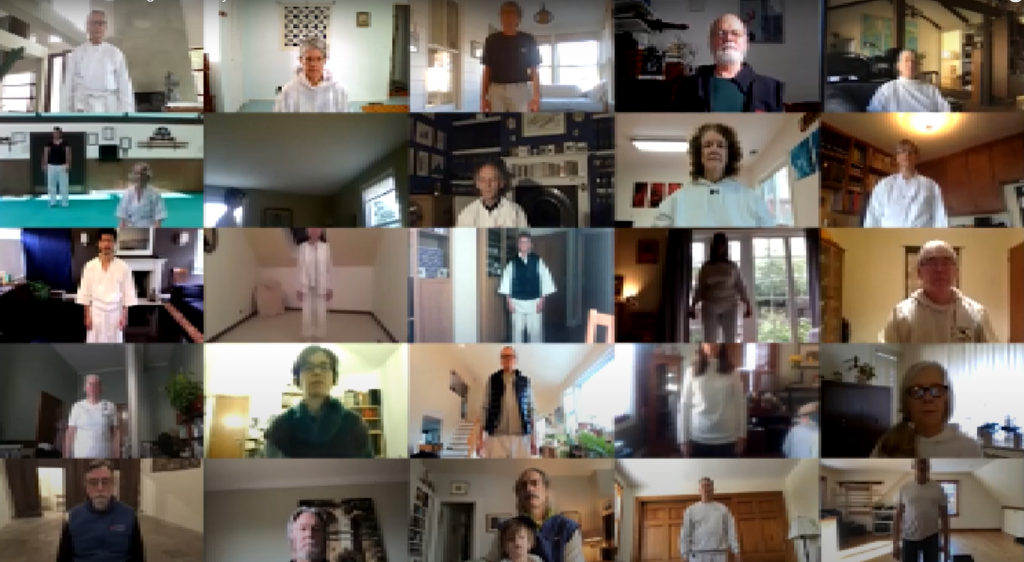
During the closing ceremony, Derk commented on how successfully he felt Ula and Shin had “planted seeds of compassion we can cultivate in our practice through movement and contemplation.” He then read the poem “Keeping Quiet” by Pablo Neruda, which felt so eloquent and germane, perhaps because we were so open and ready to receive its wisdom:
“Keeping Quiet” by Pablo Neruda
Now we will count to twelve
and we will all keep still
for once on the face of the earth,
let’s not speak in any language;
let’s stop for a second,
and not move our arms so much.
It would be an exotic moment
without rush, without engines;
we would all be together
in a sudden strangeness.
Fishermen in the cold sea
would not harm whales
and the man gathering salt
would look at his hurt hands.
Those who prepare green wars,
wars with gas, wars with fire,
victories with no survivors,
would put on clean clothes
and walk about with their brothers
in the shade, doing nothing.
What I want should not be confused
with total inactivity.
Life is what it is about;
I want no truck with death.
If we were not so single-minded
about keeping our lives moving,
and for once could do nothing,
perhaps a huge silence
might interrupt this sadness
of never understanding ourselves
and of threatening ourselves with death.
Perhaps the earth can teach us
as when everything seems dead
and later proves to be alive.
Now I’ll count up to twelve
and you keep quiet and I will go.
Reflections
It was clear by the end of this gasshuku that two years of constraints and difficulties of adapting our keiko to the Zoom platform, along with all the trial and error and improvisation that came with it, have resulted in new and effective developments in goreijutsu. Even though remote web-linked keiko cannot satisfy our needs completely, this gasshuku successfully brought its participants closer for a shared experience that was emotionally and technically rich, satisfying and remarkably deep.
One effect of having the expression of keiko constrained in this fashion is that we must be creative to come up with ways to make it work. In doing so, we find the novel choices and the required innovations lead us to look at relatively unexplored elements of our practice, and in new ways that can expand our thoughts of what keiko is, and maybe even what Shintaido is.
Ito Sensei sometimes talks to us about “image training”, which is a way of practicing by imagining yourself performing a kata or even a kumite. One simply sits or lies still and performs the movements in one’s mind. Another way is to do kumite with an imaginary partner, sort of like “shadow boxing”. These are particularly effective techniques for those of us who do not have keiko partners living nearby. It is an essential practice for senior practitioners who might have difficulty finding partners with whom to practice advanced techniques for kumite. Online events such as this gasshuku offer powerful ideas of how to use the imagination to practice alone and further develop our keiko in the absence of our friends and colleagues. Perhaps the greatest benefit of web-linked keiko will be the strengthening and enlistment of our imaginations in our practice.
In this gasshuku in particular we were shown how to enlist our imaginations to cultivate our ability to relate to others — to maintain and cultivate our capacity for empathy. In other words, to embody, exercise, and strengthen the “Hitobito-Ware” (self-other) axis that crosses our vertical Ten-Chi-Jin (Heaven-Earth-Human) axis and which together form the paradigm of our Shintaido world-view: Ten-Chi-Jin/Hitobito-Ware. Would we have imagined three years ago that this was possible without being physically together? Probably not, as we would not have imagined the necessity.
By necessity we not only imagine it, we do it. The particular creative solutions are new, but there is nothing new to being forced to make adjustments in the face of change. Whenever a mode of expression confronts a structural limitation, the expression, by necessity, must find its way through or around. The new path leads to discovery and even new variations in the expression.
Finding new modes for expression in the face of constraint has always been part of creative expression, including verbal communication, all the arts, and of course our keiko. Embracing this phenomenon can give us heart when we sadly cannot physically be together. As we cultivate our Zoom practice, as so successfully demonstrated at the PacShin Kangeiko, we may find new ways to sustain our practice and to grow with each other despite the limitations. And we may grow not just in the ways that are familiar, but in something else, something new, even something more than we once could have imagined.

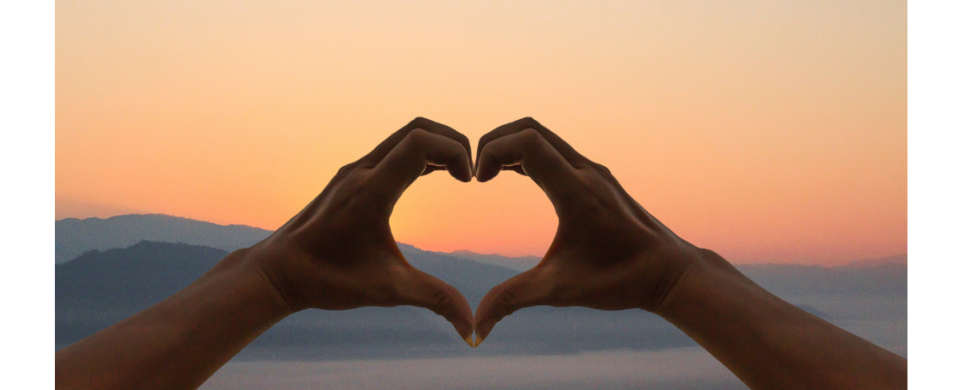


Thank you Lee for a comprehensive and meaningful report.